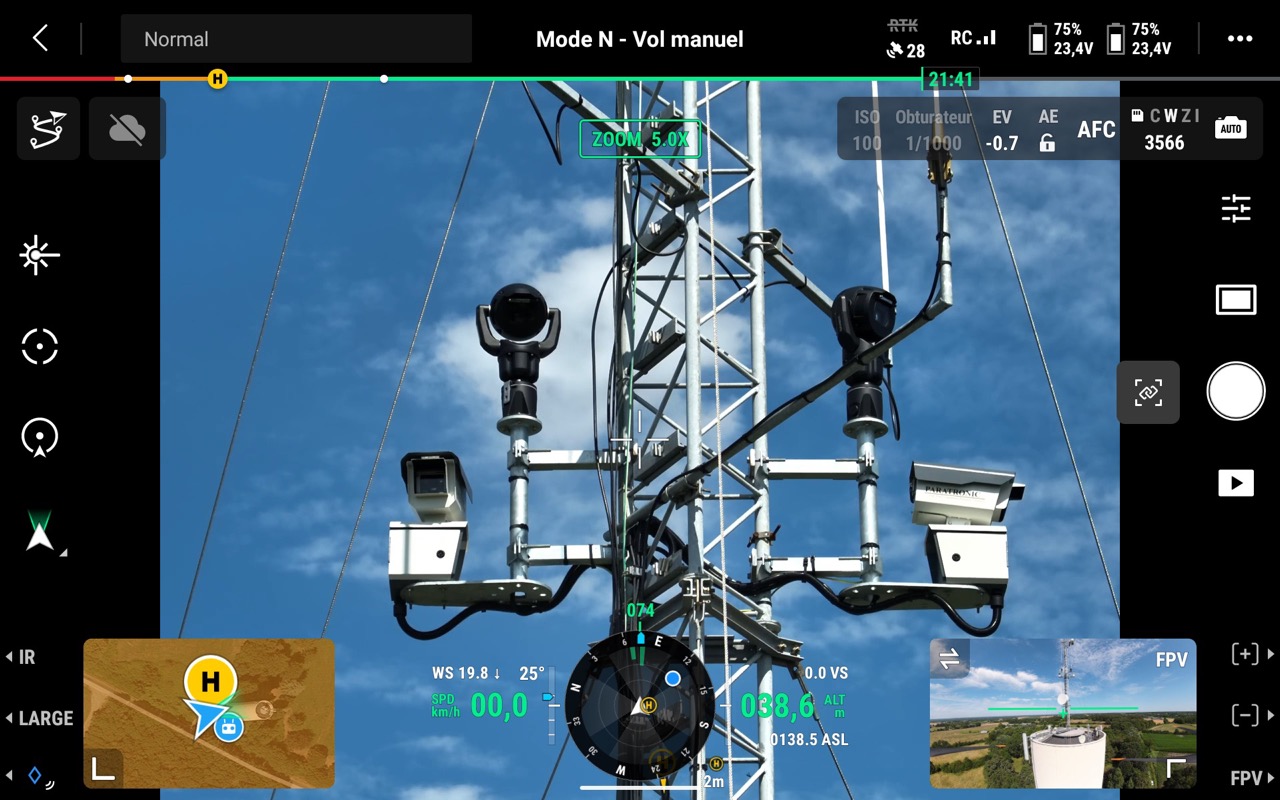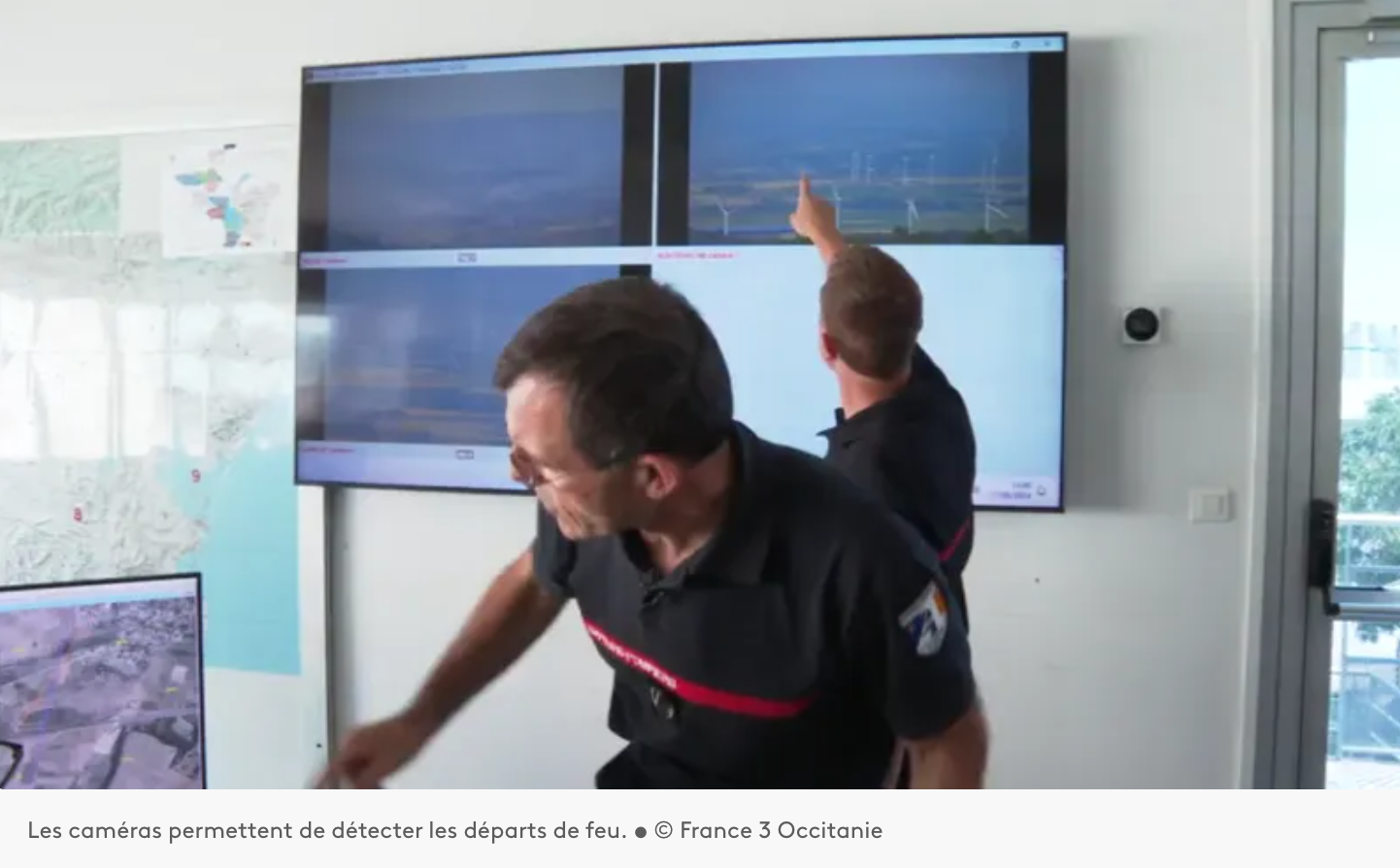Surveillance des feux
Depuis 2007, la forêt des landes est placée sous vidéo-surveillance automatique afin de détecter au plus tôt les incendies et départs de feux de forêt. Le système de détection vidéo automatique des incendies et départs de feux a été conçu et mis en place par la société PARATRONIC.
Le système ADELIE, un système automatique de vidéo-surveillance des départs de feux, permet grâce à une détection précoce et automatique par vidéosurveillance de la forêt des landes, l’intervention des moyens nécessaire dans un temps court.
Aucune intervention n’est déclenchée suite à une détection automatique de la vidéo surveillance sans que celle-ci n’ai fait l’objet d’une confirmation humaine grâce à une analyse des images vidéo transmises en temps réel. Ces images vidéo permettent de plus le suivi de l’évolution de l’incendie ou du départ de feux avant même l’arrivée des premières unités sur site.
Les 18 tours de guet du massif des Landes sont désormais équipées de 54 caméras de vidéosurveillance.
Une première dans la lutte anti-incendie en France.
En Juillet 2004, l’un des 39 guetteurs du Service départemental d’incendie et de secours (SDIS) des Landes est retrouvé sans vie au pied de sa tour de guet, de toute évidence foudroyé.
« Pour des questions de sécurité, nous avons décidé que plus aucun guetteur ne monterait dans les tours », explique le colonel Olivier Bourdil, directeur du SDIS 40.
Mais comment surveiller la forêt et déceler les départs de feu sans faire appel à l’œil aiguisé des sauveteurs ?
Solution retenue : l’installation d’une cinquantaine de caméras de surveillance au sommet des tours. Depuis le début de la saison estivale, le système baptisé ADELIE est opérationnel dans les 18 tours de guet gérées par le SDIS 40.
Les 660 000 hectares de pins maritimes du massif des Landes sont ainsi placés sous vidéo-surveillance.
« L’atout principal de notre dispositif, c’est qu’il est intelligent », indique Philippe Arnoult, chef du service informatique du SDIS 40. « Il fonctionne sur le principe de la comparaison d’images. »
Sur chacune des tours, à 40 mètres du sol, deux caméras d’une portée de 20 kilomètres scrutent la forêt en permanence en balayant un champ de 180°.
En moins de 2 minutes – le temps de leur rotation – elles prennent 18 photos. Revenues à leur point de départ, elles enregistrent à nouveau 18 clichés.
Grâce à des algorithmes complexes, un calculateur informatique analyse les images et détecte automatiquement les panaches de fumées qui peuvent apparaître à l’horizon.
Toutes ces données sont ensuite acheminées au PC sécurité de Mont-de-Marsan. Elles transitent par un réseau de transmission hertzien numérique de type Wimax ; une sorte de Wi-Fi longue distance en quelque sorte.
En clair, les données passent de tour en tour par bonds successifs de 20 kilomètres environ.
Avantage de ce type de liaison : il offre un débit (de 50 à 300 Mbit/s) beaucoup plus important que l’ADSL, avec une précision à 300 mètres.
Si une anomalie est détectée, un cercle entoure la fumée sur le cliché qui s’affiche sur l’écran de contrôle de l’opérateur. Est-on face à un départ de feu, à un nuage de poussière soulevé par un engin agricole ou à une fumée d’usine ?
Pour lever le doute, le sapeur-pompier peut alors actionner une troisième caméra placée au sommet de la tour.
Munie d’un puissant zoom, elle transmet des images en temps réel et non des photos.
Il peut également piloter une caméra installée sur une autre tour pour obtenir un angle de vue différent.
« Après avoir détecté un feu, il faut le localiser au plus vite », précise le colonel Bourdil.
Une opération qui s’effectue par triangulation. Explication : une tour donne un premier azimut. Une deuxième permet d’en établir un second. Ne reste plus qu’à tracer ces données sur une carte. Le départ de feu se situe à l’intersection des deux lignes. « La précision du système est très bonne : le départ de feu est localisé à 300 ou 350 mètres près », souligne Olivier Bourdil.
L’officier qui coordonne les secours peut même voir en temps réel l’évolution de l’incendie sur un écran géant.
« Il a une vision très précise de la situation comme s’il était dans l’une des tours de guet avec une paire de jumelle », note Philipe Arnoult.
Depuis sa mise en place, quatre départs de feu ont pu être repérés.
Le système ADELIE (Alerte Détection Localisation) est un système de surveillance feux de forêt qui détecte la présence de fumée dans le milieu naturel grâce à un principe unique de captures et de traitements d’images.

Article Sud Ouest Maine-e-Loire : Le SDIS 49 Inaugure deux nouvelles technologies, les caméras de détection des feux de forêts et une équipe de télépilotes de drones.

Installation d’un système d’Alerte, DEtection et Localisation des Incendies par caméras sur les auteurs du département de l’Aude 11.